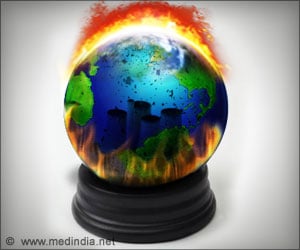
‘The use of Monsanto’s herbicide glyphosate by farmers in the US has increased from 12.5 million pounds in 1995 to 250 million pounds in 2014.
’
Tweet it Now
Enough glyphosate was applied in 2014 to spray over three-quarters of a pound of glyphosate active ingredient on every harvested acre of cropland in the U.S., and remarkably, almost one-half pound per acre on all cropland worldwide (0.53 kilogram/hectare). The paper by Charles Benbrook, PhD, titled "Trends in glyphosate herbicide use in the United States and globally."
"The dramatic and rapid growth in overall use of glyphosate will likely contribute to a host of adverse environmental and public health consequences," noted Dr. Benbrook in his paper.
Last year, 17 of the world's top cancer researchers unanimously voted to elevate the cancer profile of glyphosate on behalf of the World Health Organization (WHO). The WHO's International Agency for Research on Cancer (IARC) now classifies the weed-killer as "probably carcinogenic to humans" after the panel of experts reviewed all of the publicly available research. Following up on the action by the WHO, the state of California is currently in the process of listing glyphosate as a known human carcinogen under its Prop 65 law.
As the paper notes, recent studies have made the connection between glyphosate exposure and a number of serious health effects beyond cancer, including the degeneration of the liver and kidney, as well as non-Hodgkin lymphoma, among others. Remarkably, 74 percent of all the glyphosate sprayed on crops since the mid-1970s has been applied in just the last 10 years as the amount of genetically engineered corn and soybean crops have exploded on both U.S. and global croplands.
Advertisement
The use and efficacy of HT technology, particularly in its first decade, led to rapid and near-universal adoption in the U.S., Canada, Argentina, Brazil, and a half-dozen other countries. As a result, glyphosate use by farmers in the U.S. rose from 12.5 million pounds in 1995 to 250 million pounds in 2014, a 20-fold increase. Globally, total use rose from 112.6 million pounds in 1995 to 1.65 billion in 2014, a 14.6-fold jump.
Advertisement
"This report makes it clear that the use of glyphosate combined with the dominance of genetically engineered crops has produced an looming public health threat both in the U.S. and around the world," said Mary Ellen Kustin, a senior policy analyst at EWG. "Farmers have sprayed billions of pounds of a chemical now considered a probable human carcinogen over the past decade. Spraying has increased to multiple times a year recently on the majority of U.S. cropland. The sheer volume of use of this toxic weed-killer is a clear indication that this chemical dependency is a case of farming gone wrong."
This is Benbrook's second paper published in Environmental Sciences Europe. The first, "Impacts of genetically engineered crops on pesticide use in the U.S. - the first sixteen years," was published in September 2012 and remains the most heavily accessed paper in the 25-year history of Environmental Sciences Europe, with over 230,000 reviews.
Source-Eurekalert









